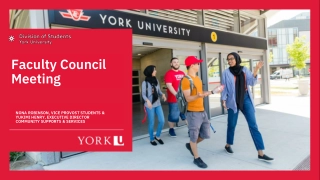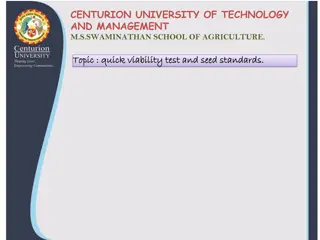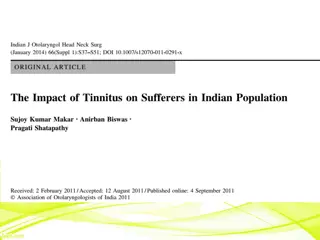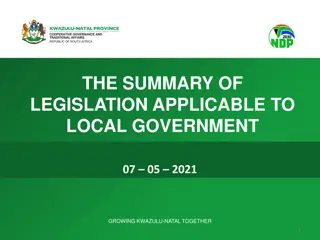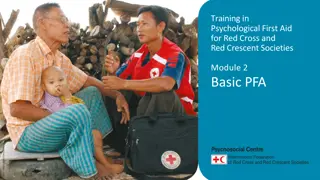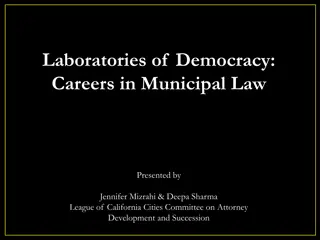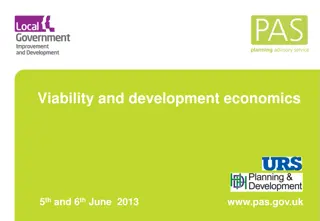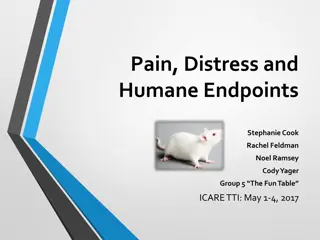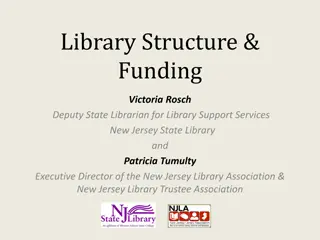Project Risk Assessment for Municipal Viability Amidst Economic Distress
Addressing the impact of economic distress on municipalities and the necessity of project risk assessment for sustaining municipal viability. Explore considerations, perspectives, and real-world examples of project failures in the media.
Download Presentation

Please find below an Image/Link to download the presentation.
The content on the website is provided AS IS for your information and personal use only. It may not be sold, licensed, or shared on other websites without obtaining consent from the author.If you encounter any issues during the download, it is possible that the publisher has removed the file from their server.
You are allowed to download the files provided on this website for personal or commercial use, subject to the condition that they are used lawfully. All files are the property of their respective owners.
The content on the website is provided AS IS for your information and personal use only. It may not be sold, licensed, or shared on other websites without obtaining consent from the author.
E N D
Presentation Transcript
IMFO CONFERENCE 3 5 OCTOBER 2016 DURBAN ICC, KZN PROJECT RISK ASSESSMENT SUSTAINING MUNICIPAL VIABILITY AMIDST ECONOMIC DISTRESS By: Thokozile Konyana
TABLE OF CONTENTS In the Media Overview of Economic Distress Impact of Economic Distress on Municipalities Establishing Context Impact on Municipal Project Management Project Management and Project Risk Defined Project Risk Assessment Considerations (A Municipal Perspective) Conducting Project Risk Assessments Closure & Questions
IN THE MEDIA Minister in the Presidency- Honourable Jeff Radebe, Underspending of public funds meant for development was tantamount to economic sabotage, and ought to be treated as a crime. Thursday 1 September at the Master Builders Association Annual Conference (Durban). www.masterbuilders.co.za North West municipalities spent less than 40% of infrastructure grant: The North West Department of Local Government says six municipalities spent less than forty percent of their annual municipal infrastructure grant. KZN records R210-million in unspent MIG grants May 31, 2016 Thursday 4 February 2016 19:35 Zebilon Maine (Source: www.sabc.co.za) Written by: Staff Reporter (Source: sabraingnews.co.za)
IN THE MEDIA From a Financial Risk perspective What is our Risk Exposure due to poor/ inadequate risk assessment? The new municipal services costing model highlights that funding required per poor household is sensitive to local conditions and vary from municipality to municipality and from project to project. It also has also established that the need to provide funding for capital renewal of ageing infrastructure is becoming more dominant an estimated R45 Billion annual capital funding will be required by 2018. Launch of the Cost of Municipal Basic Services Model by Financial and Fiscal Commission on 02 September 2016 Cape Town
IN THE MEDIA- PROJECT FAILURES M1 Bridge Collapse JHB October 2016
IN THE MEDIA- PROJECT FAILURES R600-million project failed as pit toilets collapse in Chris Hani Municipality. Tongaat Mall Collapse, 2013 Flush toilets are a pipe dream for residents of villages in the Chris Hani district in the Eastern Cape using broken pit toilets built by the municipality. Source: Southafricatoday.net
IN THE MEDIA- PROJECT FAILURES Sao Paulo Roof Collapse Construction Scheduling Problems and Risks Brazil was awarded the world cup in 2007, the issue of where to hold the opening ceremonies was not resolved until 2010. Financing was not in place until 2013. 3 workers were killed in two separate incidents during the construction of the stadium
OVERVIEW OF ECONOMIC DISTRESS Economic Distress is typically Financial and Commercial Hardship The typical signs include: Sluggish/ Slower economic growth, Higher inflation and interest rates Uneasy/ unstable Stock Markets and Falling Commodities/ Stock Values (negative investor reaction), Lower Production and Sales- Lower Consumption, decline in Job Creation (higher unemployment) Impact on Government/ Municipal Revenues? Rising Energy and Consumer prices impact on Poverty levels, Emerging Economic Risks: Climate Change- Drought in SA; Rating Agencies Possible Downgrades (SA & State Owned Enterprises) and Water Restrictions.
IMPACT OF ECONOMIC DISTRESS ON MUNICIPALITIES- Establishing Context Municipalities will similarly experience higher Operating Costs for example; Higher borrowing costs (interest rates), Higher Procurement Costs due to inflation (e.g. Labour costs, Specialists/ Consultants, Materials, etc.); Small Public Kitty and an Increase in Infrastructure Funds needed; Reduction in Recruitment due to strained Budgets and Revenues (Impact on Personnel- Capacity & Skills) and negative impact on Project success. All the above have an Impact on our ability to deliver on Municipal Projects (Adequate funds so as not to compromise on any key components of the project; Key Project Staff & Labour, Materials, equipment, etc.)
IMPACT OF ECONOMIC DISTRESS ON MUNICIPALITIES- High Level View -Higher cost of business (i.e. Expensive Financing Costs, Procurement costs, Labour Costs, etc.) -Business Dis-investment Strained Finances -Higher Unemployment and higher Social Investment -Declining Revenues and Budget Cuts (less deliverables) -Inability to pay Creditors Strained and Deteriorating Existing Infrastructure Lower Investments in New Infrastructure Higher Costs of Basic Servies- Higher Tariffs Loss/ Lack of New Developments to promote Economy growth Urban Decay (incl. rising water and elec distribution losses)
PROJECT MANAGEMENT AND PROJECT RISK DEFINED Project management is the application of processes, methods, knowledge, skills and experience to achieve the project objectives. Risk Management is a process of thinking systematically about all possible undersirable outcomes before they happen and setting up procedures that will avoid, minimise or cope with their impact What is Risk? A Risk is any event or occurrence that threatens an organisations ability to reach its objectives or its ability to survive. simply put WHAT CAN GO WRONG? Pro-actively responding to several challenges and risks in order to influence the Success of the Project. Project risk is defined by PMI as, "an uncertain event or condition that, if it occurs, has aneffect on a project s objectives.
PROJECT RISK ASSESSMENT CONSIDERATIONS IDP Planning Process? Identification of Basic Infrastructure needs and priorities (gap analysis)- Integration and Coordination (alignment of Local, district and Sector Plans?) IDP Analysis Vision and Objectives? What are the Service Delivery Targets that we plan to meet? Strategies Identification of Projects / Project proposals- to help meet the service delivery targets Councillors Wish Lists translated into Deliverables (Prioritization) subsequently feasibility studies conducted on selected projects Projects Screening and agreeing on Projects for implementation MIG projects Integration Approval Public Comments and Approval by Council
PROJECT RISK ASSESSMENT CONSIDERATIONS Project Management Office: Staffing Capacity Having the right people, with the right set of skills at/ in the right numbers and occupying the right positions? Expertise and Skills Set Having the right set of skills and capable of doing the assigned work right? Systems & Processes Having proper and adequate systems and processes in support of the work performed? Doing the right work in the right manner Controls Having effective controls (policies, standards & procedures) to ensure that objectives are reached following the right channels within appropriate boundaries? Municipal Capacity to implement Infrastructure Projects?
Project Life Cycle according to: CONDUCTING PROJECT RISK ASSESSMENTS The South African Council for the Project and Construction Management Professions (SACPCMP) Inception Risk Management Internal Control Concept & Viability Close Out Environment 6 Stages & Design Development Construction Documentation & Procurement
CONDUCTING PROJECT RISK ASSESSMENTS Clear Project Brief Procurement Policy Appointment of Project Consultants Determine Site Charectaristics Project Initiation Programme Project Partners/ Stakeholder Support Community awareness and participation (Community Liaison Officers) INCEPTION Concept design and feasibility assessments & Project Registration MIG Business Plan Development Appointment of Health and Safety Consultants Project Costing and Funding (MIG or other) and Budgets CONCEPT AND VIABILITY Technical Designs/ Plans developed and handed over to Municipality by Consultants Establish formal and Informal Communication Structures e.g. Ward Com Develop Project Related Training Plans (EPWP s)- Labour Intensive/ Job Creation Design Alternatives Expensive design but cheap maintenance VS Cheap design but expensive maintenance DESIGN DEVELOPMENT Look out for Technology, Operational and Maintenance Costs e.g. Smart tech., Green Initiatives, etc.
CONDUCTING PROJECT RISK ASSESSMENTS Appointment of Contractors and Subcontractors Procurement for Suppliers Submission and Assessment of Health and Safety Files Tender Processes and Awards Project Documentation Schedule Adequate record keeping DOCUMENTATION & PROCUREMENT Project Site handover to Contractor Community awareness and participation, e.g. CDW and Ward Committees Construction works Environmental Integrity maintained? Health and Safety Risks Adequate Capital and Operational funds Project Teams and Contractors in place and sufficiently skilled CONSTRUCTION Works Completion Certificate Retention Fees Assets recorded in FAR and Insured CLOSE OUT
CONDUCTING PROJECT RISK ASSESSMENTS Sao Paulo Stadium October 2011: 18 May 2014: October 2007: Brazil FIFA Accepts arena Corinthian and its changed to Arena de Sao Paulo for the event 1st Stadium test run held Awarded 2014 World Cup 20 May 2014: October 2007: July 2011: Stadium handed over to FIFA Sao Paulo: Morumbi Stadium Seleted at Inception as Opening Ceremony & 1st Match New Contract signed to build Stadium at R820 Million 1 June 2014: November 2013: June 2010: FIFA 2 tests run at less than full capacity (40 instead of 61 thous) Crane Collapse 7 months before event Morumbi Private Owners reject Upgrades on Stadium February 2014: 12 June 13 July 2014: August 2010: Major changes made to project Arena Conrinthians announced 49 thous seat upgrade Soccer World Cup
CONDUCTING PROJECT RISK ASSESSMENTS Sao Paulo Stadium Land/ Property Owners reject proposal to upgrade Corinthians and reject to fund any upgrades KEY RISKS: Funding sources not agreed to- Brazilian Government reluctant to use state funds to upgrade Corinthians (Private Property) Delayed Completion of Stadium Under Delivery (65 vs 61 thous seats) Project Cost Overruns (15%) Construction Accidents- Fatalities (H&S) 3 Fatalities Work Stoppages Equipment Failure (Crane Collapse) Political interferance- Conflict of interest (Members of Host team Project programme unrealistic Project Teams indecisive/ delayed decision making Unnconfirmed Sites
PROJECT RISK ASSESSMENTS KEY QUESTIONS: Key/Major risks identified? Risk Assessment Adequate: Analytical tools used to support professional judgement? Delivered as Expected within set scope, quality standards, timelines and budgets, etc. Success? Assessment Impact of Late or Non-delivery? OR Impact of this one project on any anothers? Not Delivered at all Under-Delivered (not in line with expectation) - Over budget - Poor quality - Extensive delays/ late delivery Failure?
Implementation and Close Out Change of Scope Budget Cuts, Inflation- cost escalation Poor Spending patterns (MIG impact?) (slow SCM processes) Change of Priority (Re-prioritization incosiderate of projects on the ground) Change of Contractors (inexperienced or out of budget?)/ Contractual Breaches Resignation key staff / Project Staff Turnover/ Under- capacity Late payment of Contractors- workers Work Stoppages Public protests/ Complaints Management System Damage or Collapse of key equipment (Own damage and Third Party liability) Accidents-Injuries and Fatalities Non-compliance with regulations Materials and Tools not in place/ Late procurement & delivery or Substandard components/ Theft of material Structures demolished due to poor workmanship/ failed @ Testing (cost & time implications) User department rejects final delivery of product (Quality or Functionality) Unprotected finished work damaged (natural causes or malicious) Illegal Sourcing of Water & Electricity- Connections by Contractors PROJECT RISK ASSESSMENTS- Common Risk Considerations Design Development Project Planning: Site Feasibility Study (properly done- competent consultants?) Unexpected Site Issues Over simplified Project Plans (not detailed enough) Unrealistic Schedules for complexity of project/ pressure to deliver (Project history not considered?) Little room for Error! Key tasks ommitted Unqualified/inexperienced staff given key tasks (Skills and Expertise) Skills requiremens defined? Decision making structures not in place or ineffective (Poor composition of steering committees & indecisive?) Funding sources not in place or insufficient Land/ Property ownership not considered (site not confirmed in time for project to be initiated) Project Process Controls not in place or changes un-approved New Technology used not adequately understood (lack of expertise- will expertise be secured in time/ scarce & critical skills?) Unaffordable Technology (sustainability- construction vs operational and maintenance costs) User Department not consulted (inputs not solicited) Complex Designs (qualified & experienced Consultants or emergning?) Tendering Processes (Poor project specifications? and Non- Compliance issues
CONDUCTING PROJECT RISK ASSESSMENTS- Cross Cutting Matters Meetings/ Consultations Monitoring and Reporting Health and Safety Insurance Contractors All Risk (Municipal Insurance or Contactor insurance?) Project steering Com, Technical site meetings, Joint Task Teams, Inter- departmental, Community Liaison, etc. Recorded/ record keeping of all decisions Scope variations Project Milestones/ KPI s Project Spending/ Progress Certificates Payments Budget over runs/ under-spending (Analysis) Compliance with safety standards and regulations Construction Regulations 2014 Compliance with Safety file
RISK ASSESSMENT ADEQUACY? Not earth quakes but structural failures!
Is your Risk Assessment adequate and effective? CAN THIS HAPPEN IN YOUR PROJECTS? Are we Identifying and assessing the risks adequately? Are we investing adequately in the mitigation/ contingency Can we afford to Experiment with Public Funds? actions? Is everyone aware and/or involved (all key stakeholders)? RISK IS NOT COMPLIANCE BUT MORAL CONSCIOUSNESS TO DO THE RIGHT THING, AT THE RIGHT TIME AND IN THE RIGHT MANNER.
IN CLOSING: When you know better, you have the responsibility/ obligation to do better!!!


